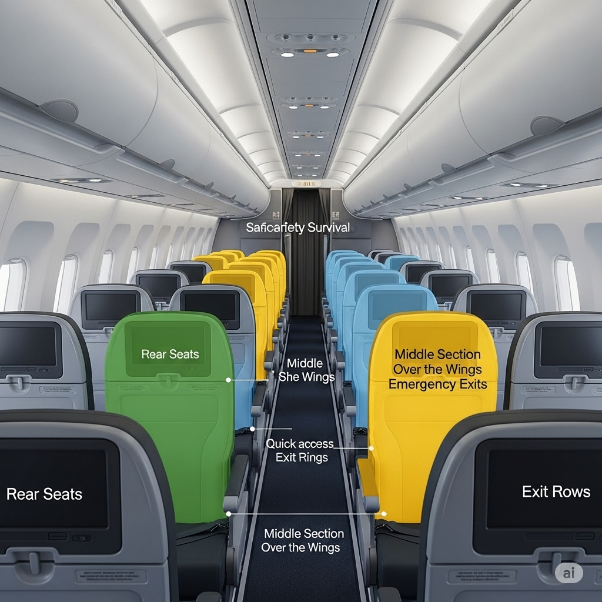Where Are the Safest Seats on an Airplane?
It's natural to wonder about safety when flying, especially after recent incidents like the Air India Express accident. While air travel remains incredibly safe overall, understanding seat safety on an aircraft is a common concern. Let's delve into which areas of a plane are generally considered safer and what we can learn from recent events.

It's natural to wonder about safety when you're flying, especially after recent tragedies like the Air India Flight 171 crash on June 12, 2025. While air travel remains incredibly safe overall, understanding seat safety on an aircraft is a common concern. Let's delve into which areas of a plane are generally considered safer and what we can learn from recent events.
Historical Data and Trends: Seat Safety Isn't Absolute
First off, it's crucial to understand: no seat guarantees absolute safety because every aircraft accident is unique, and the forces involved are unpredictable. However, historical data and crash investigations do offer some insights into which areas might have higher survival rates.
The Rear of the Aircraft: Perhaps surprisingly, statistics sometimes suggest that passengers in the rear of the aircraft have a slightly higher survival rate in a crash. Some studies indicate that those seated in the last few rows have historically fared better. This is often attributed to the tail section's ability to absorb more impact energy in certain types of crashes, acting like a "crumple zone." In a tail-first impact, the forces are distributed, potentially offering better survival chances for occupants in the rear.
Near the Exit Rows: While not universally true for all crash scenarios, seats near the exit rows can be advantageous in certain situations, particularly during post-crash evacuations. Quick access to an operable exit can be crucial for survival, especially if there's a fire or the aircraft needs rapid evacuation. However, being near an exit doesn't necessarily protect you from the initial impact forces.
The Middle Section (Over the Wings):The middle section of the plane, especially over the wings, is another area some believe offers a degree of safety. The wings themselves are incredibly strong structures and house the fuel tanks, which can provide some cushioning in a crash. Plus, the structural integrity around the wing box area is often very robust.
Insights from the Air India Flight 171 Crash on June 12, 2025
On June 12, 2025,Air India Flight 171 tragically crashed shortly after taking off from Ahmedabad. The Boeing 787-8 Dreamliner carried 242 people, with 241 fatalities and only one passenger surviving. The cause of the accident is still under intense investigation, with investigators analyzing the aircraft's black box data.
While specific details about the surviving passenger's seat location in this particular incident haven't been released, any air crash is a stark reminder of how incredibly complex aviation safety is. The tragic lessons from this accident will undoubtedly prompt the aviation industry to further scrutinize and enhance safety measures. Each incident drives a deeper understanding of the various influencing factors and pushes efforts to improve flight safety standards.
Ultimately, while these observations are based on historical data and general principles, it's vital to remember that aviation safety is a multifaceted field, and crash outcomes highly depend on the specific circumstances of each event. Passengers' greatest assurance comes from the incredibly high safety standards and rigorous maintenance protocols that govern air travel. When you board a flight, rest assured that the aircraft, regardless of your seat, is designed and maintained with your safety as the paramount concern.